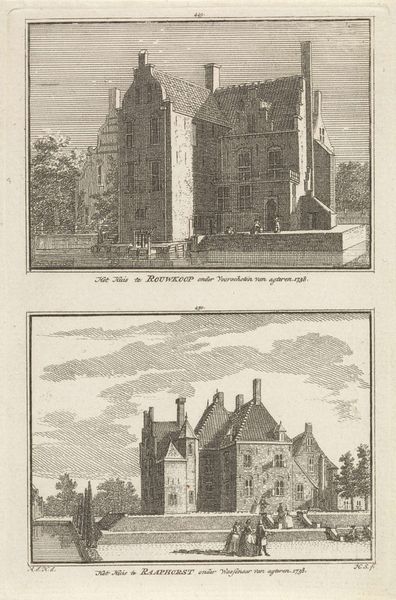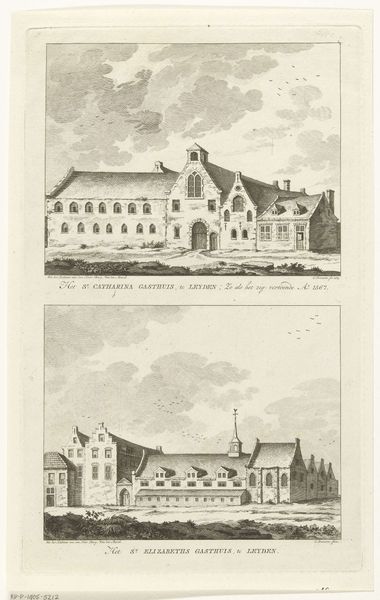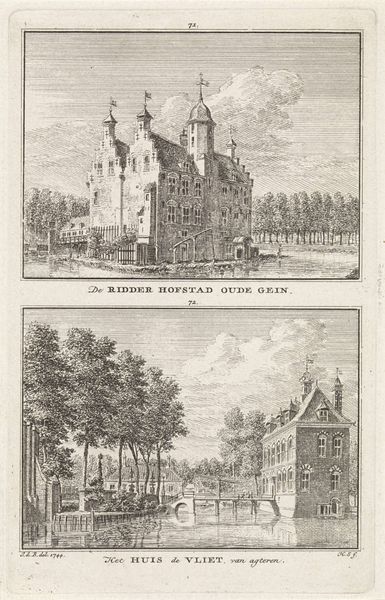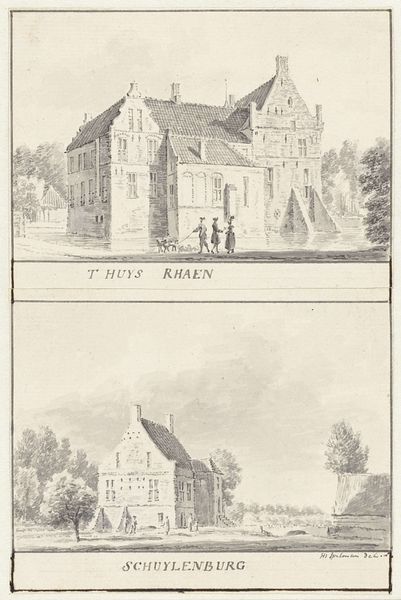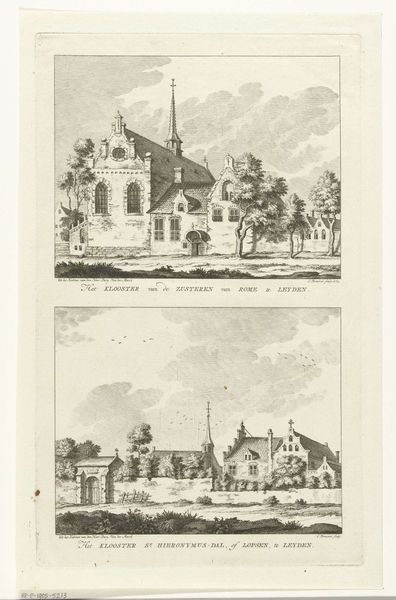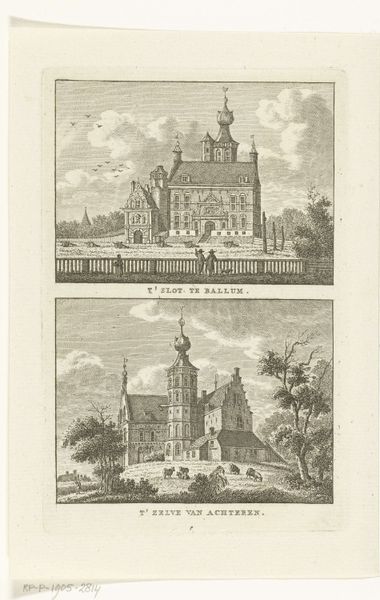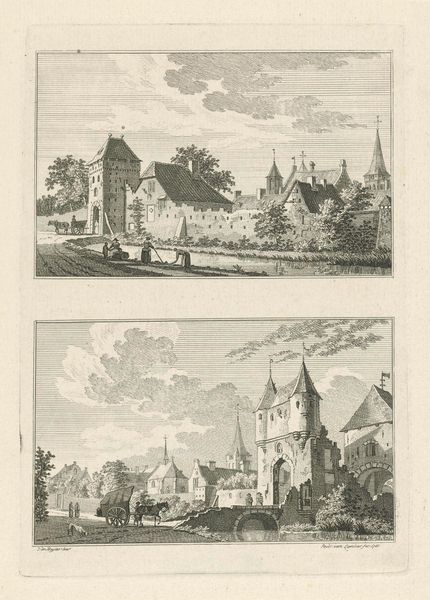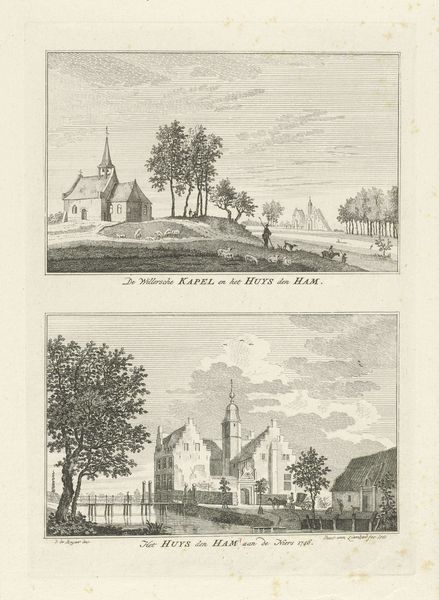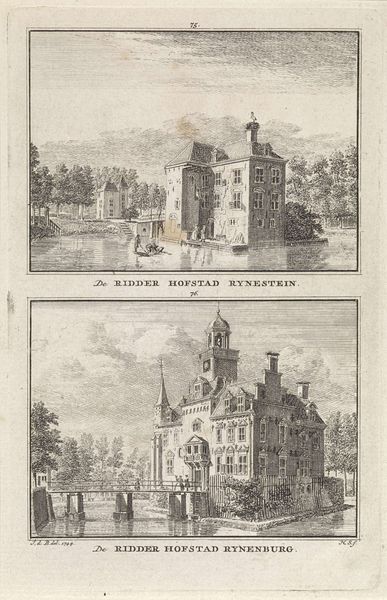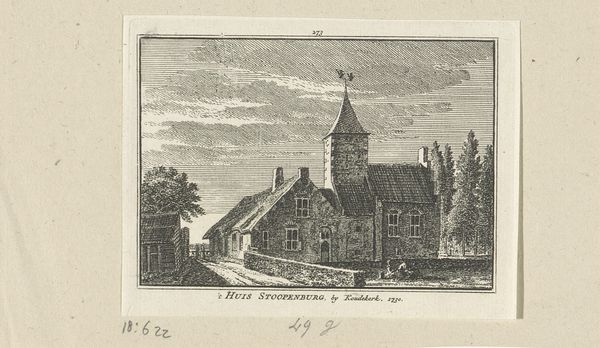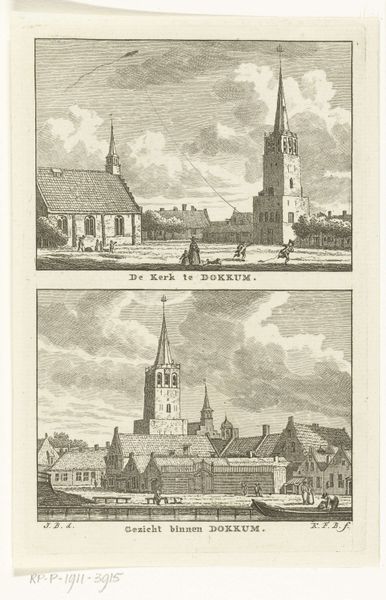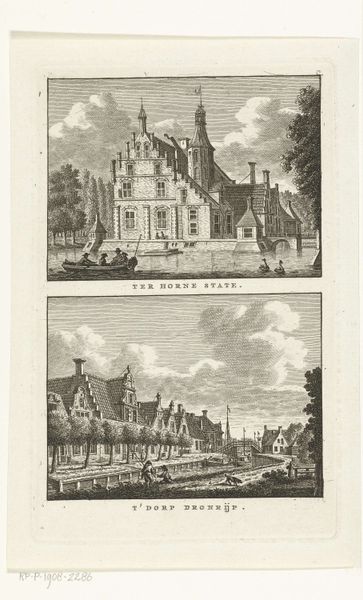
drawing, print, engraving, architecture
#
drawing
#
neoclacissism
# print
#
old engraving style
#
landscape
#
genre-painting
#
engraving
#
architecture
Dimensions: height 165 mm, width 110 mm
Copyright: Rijks Museum: Open Domain
Curator: Looking at this detailed engraving, “Twee gezichten op kasteel Den Ham, Vleuten” by Hendrik Spilman, made in 1773, what are your first impressions? I’m immediately struck by the technical skill involved in rendering the architectural details. Editor: There's an undeniable serenity here, isn't there? Almost idyllic. But that makes me wonder—who were the occupants of this castle in 1773, and what realities were hidden behind these meticulously crafted facades? What social and economic power dynamics were in play here? Curator: Well, the engraving itself, rendered using traditional printmaking techniques, suggests a level of craftsmanship and attention to detail indicative of the era’s values. This wasn’t mass production; it was a deliberate process. What can the means of production of prints like this tell us about the place of craft and labour during that period, especially compared to today? Editor: Exactly! We're not just looking at architecture; we're also seeing a portrait of the Dutch elite, frozen in time. It’s vital to consider that while some prospered within those castle walls, others toiled outside, supporting that lifestyle. Spilman aestheticizes the ownership through representation. How did these spaces and aesthetics contribute to social hierarchy? Curator: I agree, there's certainly an element of romanticizing the landscape here. The artist, or engraver rather, clearly prioritized presenting a specific image, highlighting order and classical ideals within nature. Consider the consumption of images such as this: were they used to perpetuate a certain class image or status through circulation of a refined style of architectural representation? Editor: Precisely. What this piece truly captures is an assertion of power and wealth carefully curated for public consumption, or at least for circulation within certain circles. As for us today, confronting that history also demands that we unpack how those social stratifications, partially sustained through carefully managed representations, persist in altered forms today. Curator: A valid point. It certainly makes you consider the value and function of images and artistic practice in the formation and transmission of cultural ideas. It offers us a moment to pause and reflect on the material qualities of this artwork that give form to class distinction through labor, method, and materials. Editor: Definitely. These visual representations, beyond their apparent serenity, are documents deeply intertwined with history. A view into how power presents itself, even now.
Comments
No comments
Be the first to comment and join the conversation on the ultimate creative platform.
